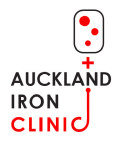Intravenous iron infusion treatment produces a quicker improvement of symptoms in the first weeks of treatment than oral iron supplementation which may cause intolerable adverse effects, such as gastrointestinal symptoms.

Why might I need an iron infusion?
- Cannot tolerate iron taken by mouth
- Your gut cannot take up iron
- Your gut is made uncomfortable by iron
- Blood loss is making it difficult for your body to keep iron
- You need to get your blood levels high quickly. This may be to prevent health problems from low iron or prevent a blood transfusion. Another reason you might need to quickly improve iron levels are before or after surgery, before or after giving birth
- Long term health issues stop your body using iron
- Have chronic kidney problems or heart failure
Benefits of Iron Infusion
Your doctor or nurse will explain the risks and benefits for receiving the iron treatment. They will fit your treatment to your current health.
For most patients any reactions will resolve without any medicine. It is rare to have a serious reaction. The doctor or nurse will treat you straight away.
An Internal medicine specialists or specialist nurses are always with you. You can be comforted by their experience in giving iron infusions. You are in a safe environment supported by highly trained staff.
An Iron infusion into your vein is prescribed when oral iron cannot be taken orally. This option is better when you are made unwell by oral iron or your body cannot use the oral iron. An iron infusion works better when a quick increase of iron levels is needed.
If there is a chance you could be pregnant, inform your doctor or midwife. Iron infusions should be avoided in the first trimester in pregnancy. Later in pregnancy iron infusions are good for mother and baby.
Alternatives to Iron Infusions
Oral Iron. If you need iron, the first option is either by taking tablet or liquid iron. This can be the option when a slower rise of your iron levels is fine. Sometimes your body does not like or cannot not use the iron from tablets. If you have stomach upset with iron tablets liquid iron can be used. Stating with a lower dose can help. If this works you can increase the liquid slowly until you reach your dose. Another option is to take the iron tablets 2 – 3 times a week instead of daily. Discuss this with your doctor, nurse or midwife. It important that you have the right amount of iron to be healthy. Often iron tablets that claim they are gentle don’t have enough iron in them.
Diet. Iron in foods is not always easily taken up or used by the body. Once there is low iron levels or anaemia (low haemoglobin) eating iron rich foods will not raise iron levels enough. You may still be losing more iron than you can take from food. This means diet will never help you reach your best iron levels.
What is Ferinject® and what it is used for?
Ferinject® is medicine that replaces iron stores in the body. Iron deficiency and anaemia cause low energy in all body systems. Haemoglobin needs iron to work. Iron is needed to feed oxygen to muscle tissue. There is no energy fed to blood and muscle without iron. This means the human body does not have the energy to work properly. Ferinject® is used when oral iron medicines do not work or cannot work, to improve iron stores and energy.
How does Ferinject® work?
Ferinject® contains tiny particles of iron with a sugar coating. The body likes the sugar covered iron, which lets the iron release continuously for storage and activity. The Ferinject iron is easily stored around your body’s organs and tissue for later use. Stored iron is later collected by the blood to help carry oxygen around the body. This will feed muscle and carry out other important roles to keep the body living. This process will continue months after the infusion is given.
How is Ferinject® given?
You doctor will give you undiluted Ferinject® infusion into a vein. The infusion is 15 minutes followed by 30 minutes of monitoring.
What happens after the Treatment?
You can go straight home once you have been checked. You will repeat blood test at 6 weeks and 12 weeks. When iron is used quickly or if there are long term health issues, further iron infusions are needed. You may have further iron level checks after 3 months. You must stop any oral iron tablets or iron liquids after your iron infusion. If you are not sure check with your doctor.
Possible side effects of Ferinject®
There is a low risk with all iron medications and not all patients get side effects. Allergic reactions are rare affecting less than 1 in 1,000 people. Your doctor and nurse will monitor you closely. It is common to feel warm or flushed during the infusion. This is your body recognising the iron in your blood. Sometimes this may make you feel uncomfortable (“flu”-like) but will only occur for a few days after the infusion.
What are the benefits of Ferinject®?
An iron infusion instantly raises the body’s iron levels. It is quicker than supplements or diet changes. Low iron levels and anaemia improve immediately. It also helps heart problems, kidney problems and preparing for surgery. The physical benefits include more energy and easier breathing. The benefits are felt within a few weeks of the iron infusion. The cause of your iron deficiency or anaemia will limit the time the benefits last. Some medical treatments, regular blood loss (menstruation, bleeding disorders), gastric function, chronic disease or diet (vegan, vegetarian) may cause iron loss. The benefits of an iron infusion may last anywhere from several months to a few years.
